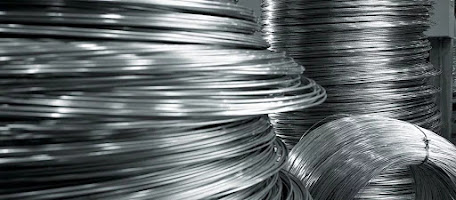From Raw Material to Strength: The Manufacturing Process of GI Wires
Introduction:
Galvanized Iron (GI) wires, with their corrosion-resistant properties and high tensile strength, play a vital role in various industries. To truly appreciate the wonders of GI wires, one must understand the intricate journey they undergo, transforming from raw materials into indispensable components that reinforce structures, secure farmlands, and serve a myriad of industrial applications. This comprehensive guide unveils the manufacturing process of GI wires, offering insights into the key stages that shape these versatile and resilient materials.
The Foundation - Raw Materials for GI Wires
At the heart of every GI wire lies a carefully selected blend of raw materials. This section will explore the primary components, typically low carbon steel wire rods, that serve as the foundation for the manufacturing process. The importance of quality raw materials in determining the strength and characteristics of the final GI wire will be emphasized.
Drawing and Annealing - Transforming Steel into Wires
The journey from raw steel to the thin, malleable wires begins with the drawing process. This section will delve into the mechanical drawing in GI Wire Manufacturers in GI Wire Manufacturers in Chhattisgarh , where the steel wire rods are progressively reduced in diameter through a series of dies. Following this, annealing, a heat treatment process, imparts flexibility to the wires, making them more malleable for subsequent stages of production.
Cleaning and Pickling - Preparing the Surface for Galvanization
The cleanliness of the wire's surface is paramount for effective galvanization. This section will explore the cleaning and pickling stages, where the wires undergo processes to remove oxides, rust, and any contaminants. This meticulous preparation ensures that the zinc coating, applied in the subsequent galvanization step, adheres seamlessly to the wire's surface.
Galvanization - The Heart of Corrosion Resistance
Galvanization, the hallmark of GI wires, is the process by which a protective layer of zinc is applied to the surface of the wires. This section will provide an in-depth look into the galvanization process, covering methods such as hot-dip galvanization and electro-galvanization. The benefits of galvanization, including enhanced corrosion resistance and longevity, will be explored.
Cooling and Quenching - Setting the Galvanized Coating
Once the galvanization process is complete, the wires undergo cooling and quenching to solidify the zinc coating. This section will explain the significance of controlled cooling in ensuring uniform coating thickness and enhancing the overall strength and durability of the GI wires.
Inspection and Quality Control - Ensuring Consistency
Quality control is a critical aspect of GI wire manufacturing. This section will shed light on the rigorous inspection processes that GI wires undergo. From visual inspections to measurements of coating thickness and adhesion strength, manufacturers employ stringent quality control measures to ensure that every batch of GI wires meets or exceeds industry standards.
Spooling and Packaging - Ready for Market
With the galvanized wires meeting quality standards, they are then spooled and prepared for packaging in . This section will discuss the spooling process, where the wires are wound into manageable coils or spools and MS Binding Wire Manufacturers in Chhattisgarh . The packaging stage ensures that the GI wires reach end-users in optimal condition, ready for deployment in various applications.
Applications and End-Use - Where Strength Meets Purpose
The manufacturing journey of GI wires culminates in their deployment across diverse applications. This section will explore the end-use scenarios, including their role in construction as reinforcement in concrete structures, in agriculture for fencing and trellising, and in various industrial applications. Real-world examples will illustrate the versatility and indispensability of GI wires.
Recycling and Sustainability - A Circular Approach
As the world embraces sustainability, this section will discuss the recyclability of GI wires. The zinc coating, a key component of galvanized wires, is recyclable, aligning with circular economy principles for MS Binding Wire Manufacturers in Tamilnadu . The sustainable aspects of GI wire manufacturing, including reduced environmental impact and energy efficiency, will be highlighted.
Conclusion: The Strength of Transformation
In conclusion, the manufacturing process of GI wires is a testament to the strength of transformation. From the raw materials to the final product and , each stage plays a crucial role in shaping wires that are not just durable and corrosion-resistant but also versatile enough to serve a multitude of purposes. As we unravel the manufacturing process of GI wires, it becomes evident that their strength goes beyond tensile measurements; it lies in their ability to reinforce structures, secure landscapes, and contribute to sustainable practices in an ever-evolving world.
We also Serve our products in This cities -
HB Wire Manufacturers in Chhattisgarh , HB Wire Manufacturers in Bhilai , HB Wire Manufacturers in Raipur



Comments
Post a Comment